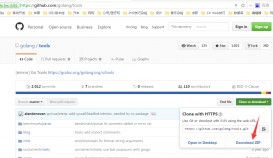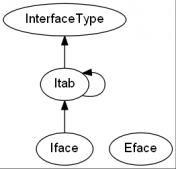|
1
2
3
4
5
6
7
8
9
10
|
package mainimport ("fmt")func main() { subsCodes := []string{"aaaa", "vvvvv", "dddd", "eeeee", "gfgggg"} for _, s := range subsCodes { fmt.Println(s) }} |
補充:golang字符串string與字符數組[]byte高效轉換
string與[]byte的直接轉換是通過底層數據copy實現的
var a = []byte("hello boy")
var b = string(a)
這種操作在并發量達到十萬百萬級別的時候會拖慢程序的處理速度
通過gdb調試來看一下string和[]byte的數據結構
|
1
2
3
4
5
6
7
8
9
10
11
12
13
14
15
16
17
18
19
20
21
22
23
24
25
26
27
28
29
|
(gdb) l main.mainimport ( "fmt")func main() { s := "hello, world!" b := []byte(s) fmt.Println(s, b)(gdb) b 11Breakpoint 1 at 0x487cd9: file /export/home/machao/src/test/strbytes.go, line 11.(gdb) rStarting program: /export/home/machao/src/test/test1 Breakpoint 1, main.main () at /export/home/machao/src/test/strbytes.go:11 fmt.Println(s, b)(gdb) info localss = {str = 0x4b8ccf "hello, world!level 3 resetload64 failednil stackbaseout of memorys.allocCount=srmount errorstill in listtimer expiredtriggerRatio=unreachable: value method xadd64 failedxchg64 failed nmidlelocked= on "..., len = 13}b = {array = 0xc4200140e0 "hello, world!", len = 13, cap = 16}(gdb) ptype stype = struct string { uint8 *str; int len;}(gdb) ptype btype = struct []uint8 { uint8 *array; int len; int cap;} |
轉換后 [ ]byte 底層數組與原 string 內部指針并不相同,以此可確定數據被復制。那么,如不修改數據,僅轉換類型,是否可避開復制,從而提升性能?
從 ptype 輸出的結構來看,string 可看做 [2]uintptr,而 [ ]byte 則是 [3]uintptr,這便于我們編寫代碼,無需額外定義結構類型。如此,str2bytes 只需構建 [3]uintptr{ptr, len, len},而 bytes2str 更簡單,直接轉換指針類型,忽略掉 cap 即可。
通過unsafe.Pointer(指針轉換)和uintptr(指針運算)實現轉換
|
1
2
3
4
5
6
7
8
9
10
11
12
13
14
15
16
17
18
19
20
|
package mainimport ( "fmt" "strings" "unsafe")func str2bytes(s string) []byte { x := (*[2]uintptr)(unsafe.Pointer(&s)) h := [3]uintptr{x[0], x[1], x[1]} return *(*[]byte)(unsafe.Pointer(&h))}func bytes2str(b []byte) string { return *(*string)(unsafe.Pointer(&b))}func main() { s := strings.Repeat("abc", 3) b := str2bytes(s) s2 := bytes2str(b) fmt.Println(b, s2)} |
![go 迭代string數組操作 go for string[] go 迭代string數組操作 go for string[]](/uploads/allimg/210320/1-210320010S9.jpg)
沒有出現逃逸現象
|
1
2
3
4
5
6
7
8
9
10
11
12
13
14
15
16
17
18
19
20
21
22
23
24
25
26
27
28
29
30
|
package mainimport ( "testing" "io/ioutil" "time" "fmt")var s, _ = ioutil.ReadFile("mydata4vipday.720.datx")func test() { b := string(s) _ = []byte(b)}func test2() { b := bytes2str(s) _ = str2bytes(b)}func BenchmarkTest(b *testing.B) { t1 := time.Now() for i := 0; i < b.N; i++ { test() } fmt.Println("test", time.Now().Sub(t1), b.N)}func BenchmarkTestBlock(b *testing.B) { t1 := time.Now() for i := 0; i < b.N; i++ { test2() } fmt.Println("test block", time.Now().Sub(t1), b.N)} |
對比一下優化前后的性能差異
![go 迭代string數組操作 go for string[] go 迭代string數組操作 go for string[]](/uploads/allimg/210320/1-210320010S9-50.jpg)
沒有額外開辟內存0B/op,執行效率:5億次耗時1.6秒,而不用unsafe.Pointer和uintptr轉換300次耗時久達到了1.1秒,效率對比高下立判
以上為個人經驗,希望能給大家一個參考,也希望大家多多支持服務器之家。如有錯誤或未考慮完全的地方,望不吝賜教。
原文鏈接:https://blog.csdn.net/EasternUnbeaten/article/details/72355127












